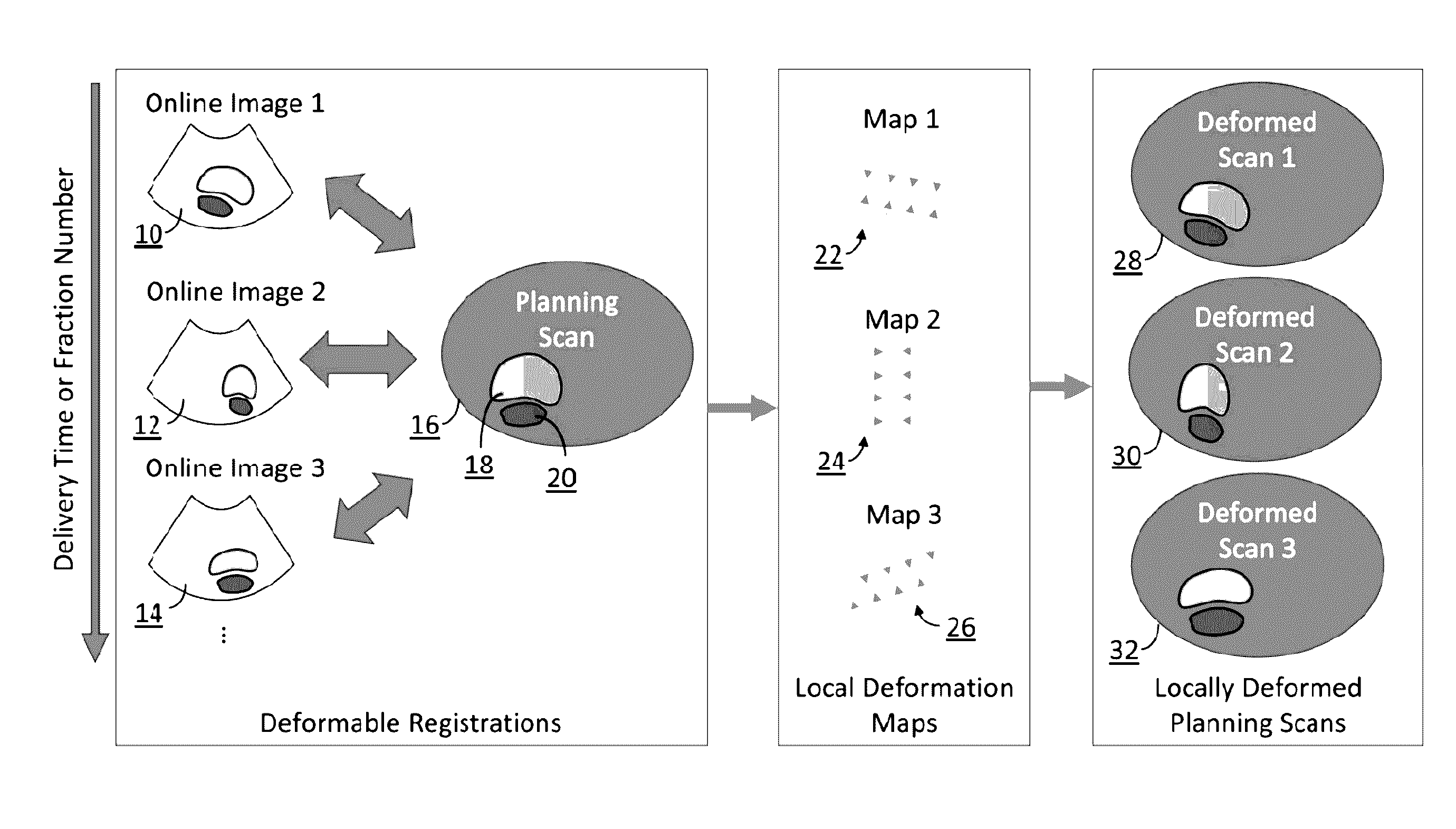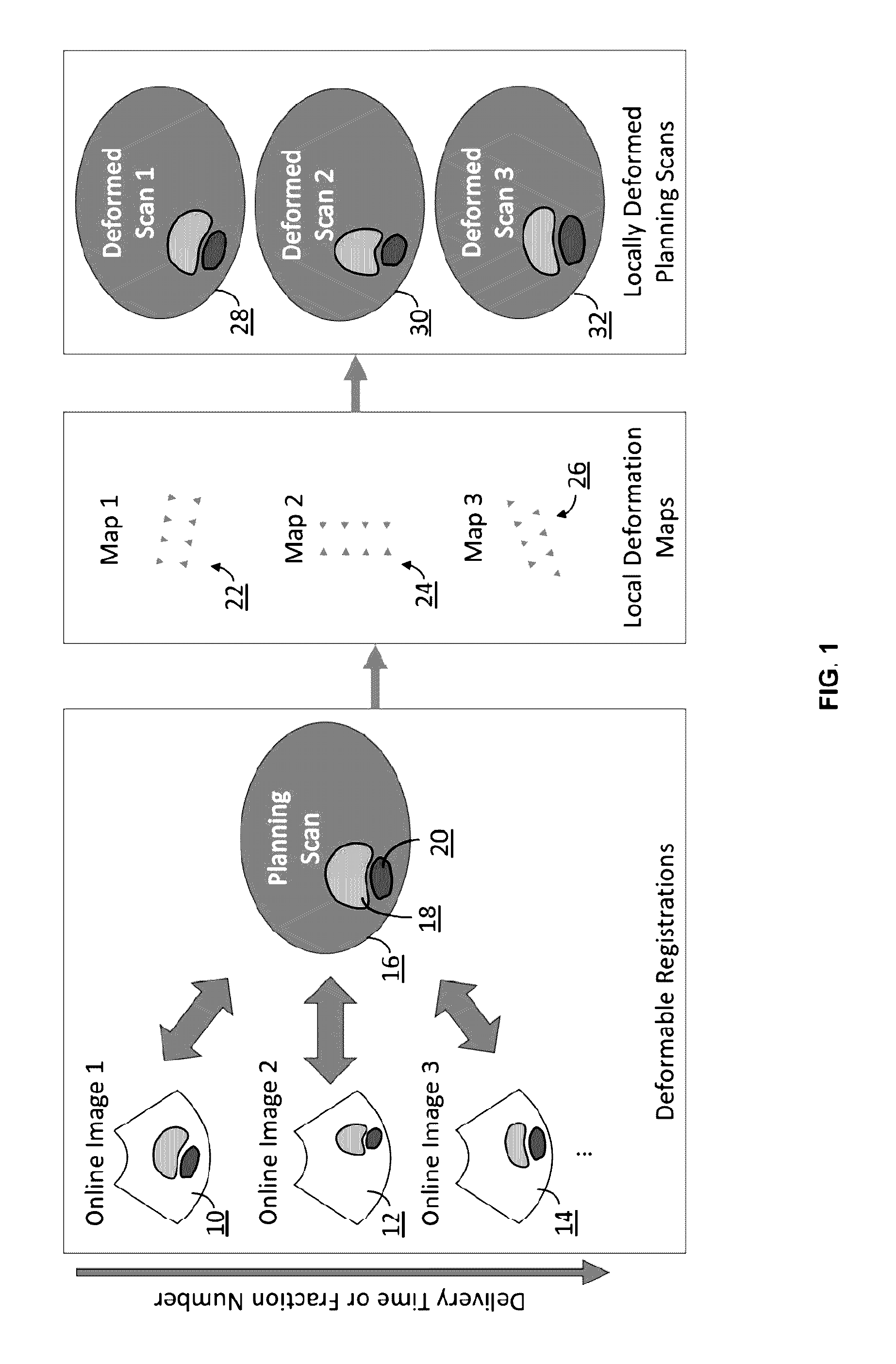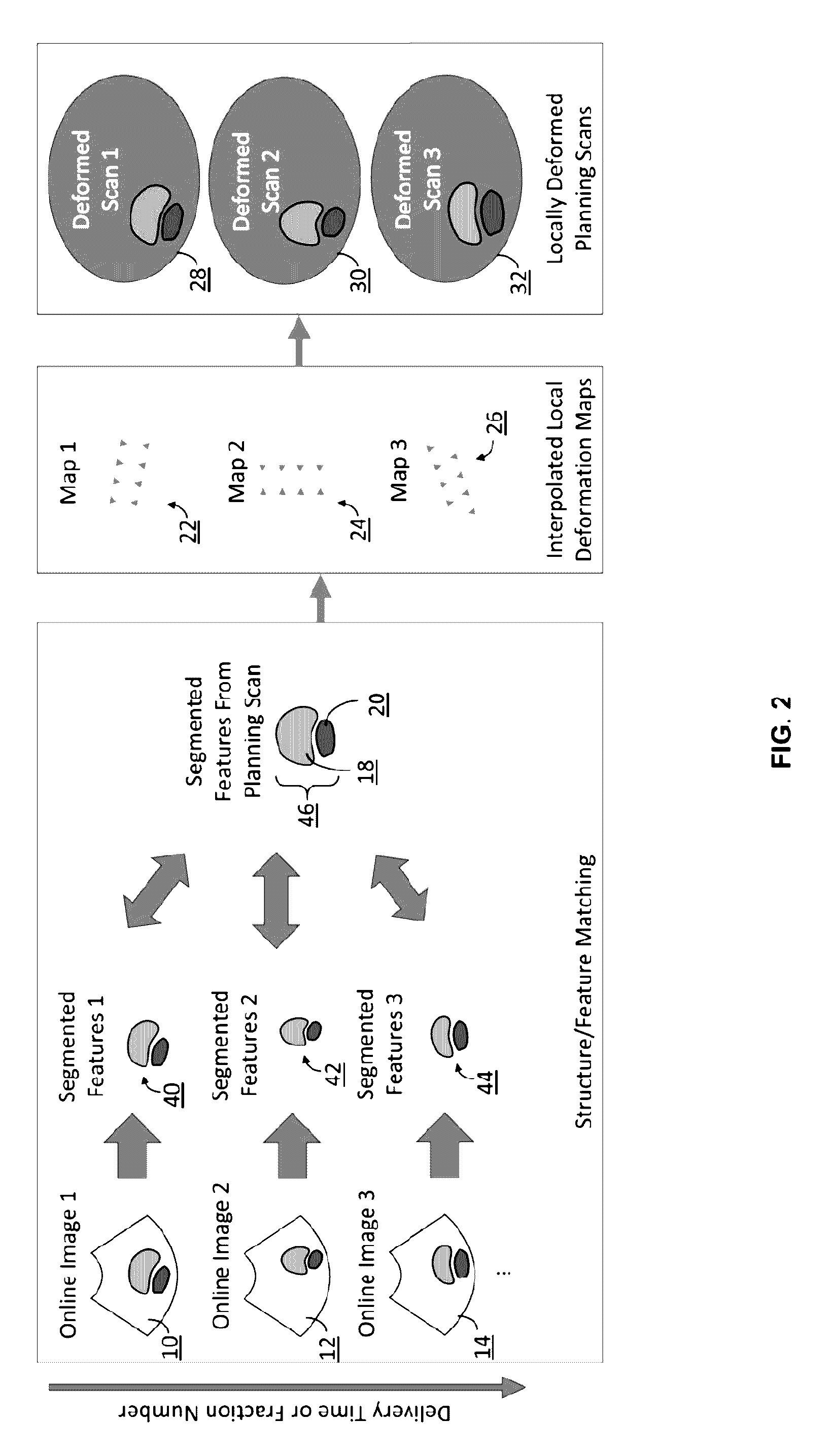Radiotherapy dose assessment and adaption using online imaging
- Summary
- Abstract
- Description
- Claims
- Application Information
AI Technical Summary
Benefits of technology
Problems solved by technology
Method used
Image
Examples
Embodiment Construction
[0019]The methods described herein use information from online imaging scans collected before and / or during radiation therapy beam delivery in order to assess and adapt radiation dose delivered to the patient. The online images capture the state of the patient's anatomy directly prior to or during radiation beam delivery. The premise is to use the online images to inform deformations to the planning scans that were originally used to plan and simulate the radiation dose delivered to the patient. The deformed planning scans can then be used to compute radiation delivered to the patient in a mariner that better represents the state of the patient's actual anatomy during beam delivery. Note that while the methods below are discussed in the context of radiotherapy, it is also possible to apply such methods to other areas of medical therapy where dose can be planned and assessed including but not limited to high intensity focused ultrasound therapy (HIFU), radiofrequency ablations, hypot...
PUM
 Login to View More
Login to View More Abstract
Description
Claims
Application Information
 Login to View More
Login to View More - R&D
- Intellectual Property
- Life Sciences
- Materials
- Tech Scout
- Unparalleled Data Quality
- Higher Quality Content
- 60% Fewer Hallucinations
Browse by: Latest US Patents, China's latest patents, Technical Efficacy Thesaurus, Application Domain, Technology Topic, Popular Technical Reports.
© 2025 PatSnap. All rights reserved.Legal|Privacy policy|Modern Slavery Act Transparency Statement|Sitemap|About US| Contact US: help@patsnap.com



